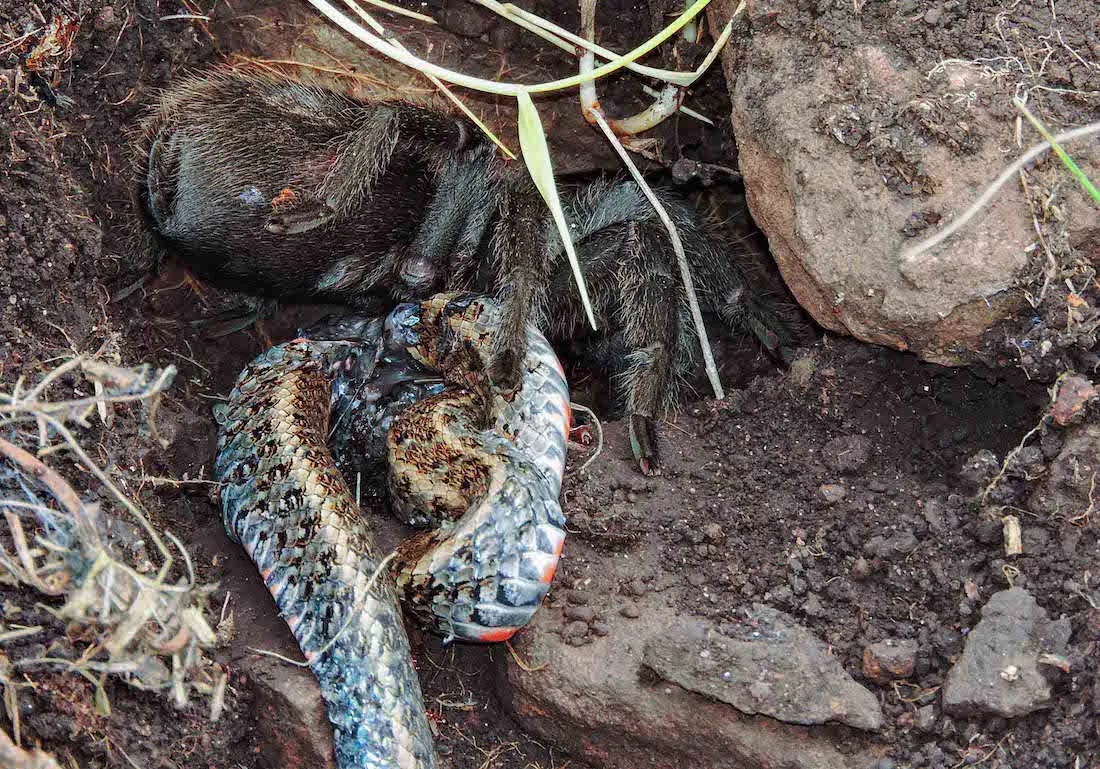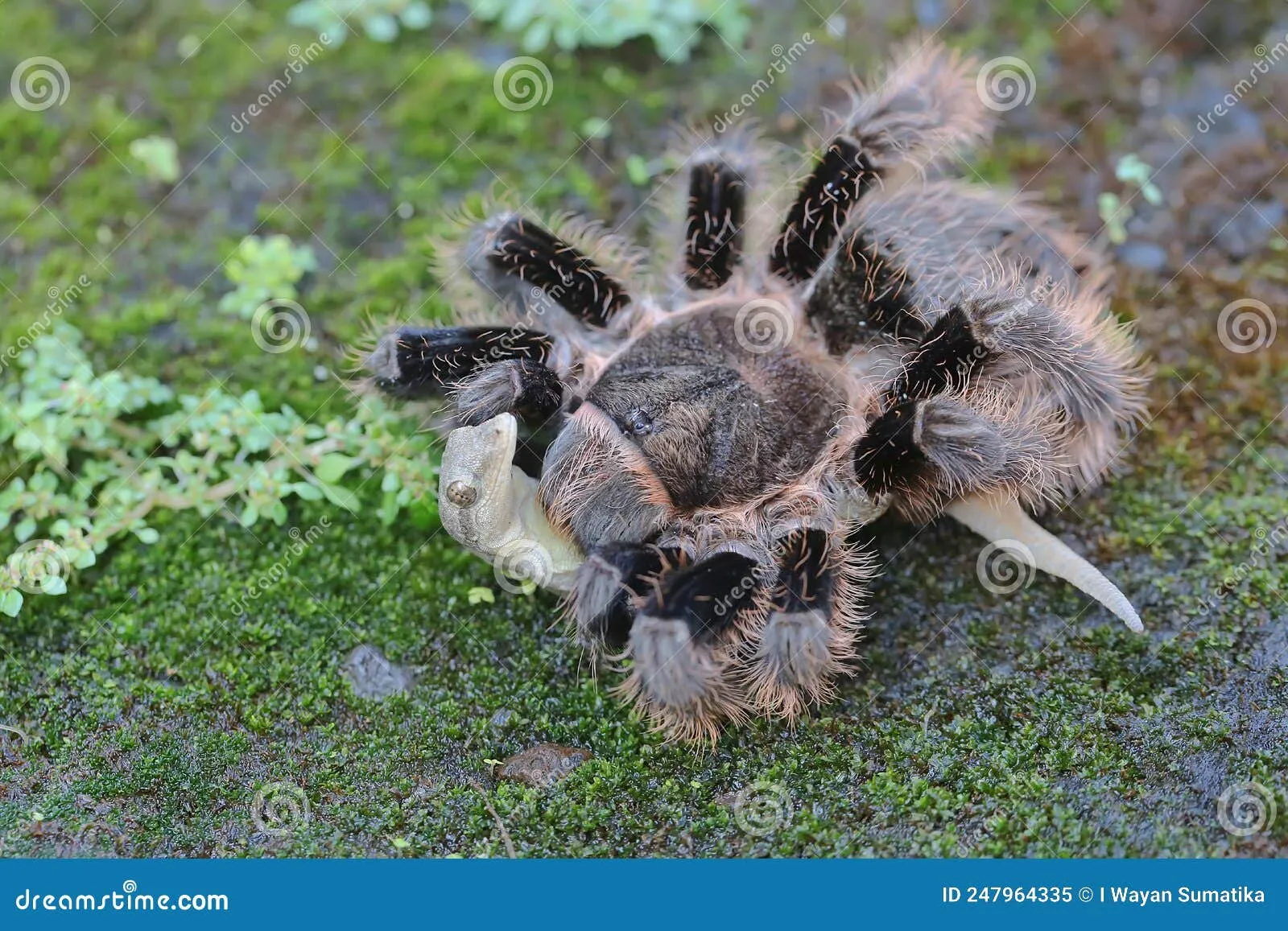Tarantula Eats Lizard: Top 5 Facts!
Witnessing a tarantula eat a lizard is a rare and captivating spectacle of nature’s raw power and the intricate balance of the ecosystem. While tarantulas are often perceived as fearsome creatures, their predatory behavior offers a fascinating glimpse into the survival strategies employed by both predator and prey. This article delves into the intriguing world where these two species collide, revealing the key facts behind this dramatic encounter. Prepare to be amazed by the Top 5 Facts about tarantulas eating lizards, uncovering the intricacies of their hunting methods, the role of venom, and the environmental factors that influence this natural phenomenon. It is a true display of nature’s drama, filled with both predator and prey.
The Predatory Nature of Tarantulas
Tarantulas, belonging to the Theraphosidae family, are primarily opportunistic predators. Their diet consists mainly of insects, but they are known to consume other animals, including lizards, frogs, small birds, and rodents. These spiders are equipped with a set of specialized features, like powerful fangs and a potent venom, making them highly efficient hunters. Their hunting behavior is mainly based on their senses, as they use vibrations and movements to identify potential prey. This predatory nature is fundamental to their survival, as it provides them with the necessary nutrients and energy to thrive in their respective habitats. Understanding this behavior is crucial in comprehending the dynamics of ecosystems where tarantulas reside, and is what make them the amazing creatures they are.
Tarantula’s Hunting Techniques

Tarantulas are ambush predators, typically lying in wait for unsuspecting prey. They rely heavily on their senses, particularly their ability to detect vibrations in the ground and air, to locate their targets. When a lizard or other potential meal comes within striking distance, the tarantula swiftly pounces. The spider uses its powerful chelicerae (fangs) to deliver a venomous bite, immobilizing the prey. The venom contains a cocktail of toxins that both paralyze the lizard and begin the digestive process. The tarantula may then drag its victim back to its burrow or a safe location to feed. This hunting style demonstrates their remarkable ability to adapt and survive in diverse environments. It is also a great example of the efficiency of the tarantula.
The Role of Venom
Venom plays a crucial role in the tarantula’s hunting strategy. It serves two primary functions: to subdue the prey and to initiate the breakdown of tissues. Tarantula venom contains neurotoxins that paralyze the lizard, preventing it from escaping. It also includes enzymes that start the process of external digestion, liquefying the prey’s internal organs. This allows the tarantula to suck up the nutrient-rich fluids, leaving behind only the indigestible parts of the lizard’s body. The composition and potency of the venom vary depending on the tarantula species, but its effectiveness is critical for the spider’s survival, allowing it to overcome prey that is significantly larger than itself. This helps the tarantula get the nutrients it needs to survive in the wild.
Lizard Species at Risk
Not all lizards are equally vulnerable to tarantula predation. The risk varies depending on the size, behavior, and habitat of the lizard species. Smaller and more defenseless lizards, such as juveniles or those that are slower-moving, are more susceptible to being caught by tarantulas. Some lizard species have evolved defensive mechanisms, such as camouflage, speed, or the ability to detach their tails to escape predators. The presence of these defense mechanisms impacts the frequency with which tarantulas are successful in catching lizards. Furthermore, the availability of alternative prey sources, such as insects, can also influence the frequency of tarantula-lizard encounters, impacting the overall balance of the ecosystem.
Size Matters in the Hunt

The size of both the tarantula and the lizard significantly influences the outcome of a predatory encounter. Larger tarantulas have an advantage because they can subdue bigger prey. They also produce more potent venom. Conversely, smaller tarantulas may be limited to preying on smaller lizards. The size of the lizard plays a crucial role too. A larger lizard can potentially overpower or escape a tarantula, while smaller lizards are easier targets. This size dynamic shapes the predator-prey relationship, influencing the types of lizards that are most vulnerable to tarantula predation and the overall structure of the ecosystem. The environment plays a great role too, such as in the desert.
Factors Influencing Predation
Several environmental and behavioral factors affect the likelihood of a tarantula preying on a lizard. These include the availability of prey, the habitat, the tarantula’s activity level, and the lizard’s behavior. During times when insects are scarce, tarantulas may be more inclined to hunt lizards. The presence of suitable habitat, such as burrows and dense vegetation, provides cover for both the tarantula and the lizard, influencing their interactions. Climatic conditions, such as temperature and humidity, can also affect the activity levels of both species, impacting the frequency of encounters. The time of day and season also play a role, as they determine the periods of peak activity for both the hunter and the hunted, which is an important factor.
The Prey’s Perspective
From the lizard’s perspective, the encounter with a tarantula is a matter of survival. Lizards have developed various strategies to evade tarantulas, including rapid movement, camouflage, and the ability to detach their tails to distract predators. The lizard’s behavior, such as vigilance and the selection of safe habitats, is crucial in avoiding predation. The lizard’s ability to detect and avoid tarantulas is a testament to the evolutionary arms race between predator and prey. A lizard’s awareness of its surroundings and its quick reactions are critical for surviving in tarantula-inhabited areas. It’s a constant test of the survival skills of both animals.
Survival Strategies of Lizards

Lizards have evolved numerous survival strategies to reduce their risk of being eaten by tarantulas. Camouflage, such as the ability to blend into their surroundings, helps them remain unseen by the spider. Speed is another critical defense, allowing them to escape quickly if they are detected. Some lizards can detach their tails, a process called autotomy, to distract a predator and provide an opportunity to escape. Furthermore, lizards often seek refuge in burrows, rock crevices, or dense vegetation, where tarantulas may find it difficult to access them. These survival tactics are essential for the lizards’ survival, contributing to the ongoing evolutionary battle between predator and prey.
The Aftermath of the Encounter
The aftermath of a tarantula-lizard encounter is a grim but essential part of the ecosystem. After the tarantula subdues and kills the lizard, it begins to feed. The tarantula injects digestive enzymes into the lizard’s body, breaking down the internal organs into a liquid form. It then sucks up this nutrient-rich fluid, leaving behind the indigestible parts. The leftovers provide nutrients to the tarantula. This process is crucial for the spider’s survival, providing it with essential nutrients and energy. Furthermore, the remaining organic matter is then recycled back into the ecosystem, which helps the circle of life continue for the benefit of others.
Digestion and Nutrition
Tarantulas, like other spiders, have a unique digestive system. They do not have teeth and therefore cannot chew their food. Instead, they inject digestive enzymes into their prey, breaking it down externally. The tarantula then sucks up the resulting liquid, absorbing the nutrients. Lizards provide a rich source of proteins, fats, and other essential nutrients for tarantulas, which is crucial for growth, reproduction, and overall health. The efficiency of this external digestion system allows tarantulas to extract maximum nutritional value from their prey, supporting their survival in diverse environments. This also allows them to thrive where others may fail in the wild.
Environmental Impact

The interactions between tarantulas and lizards have a significant impact on their respective environments. Tarantulas play a vital role in controlling lizard populations, preventing them from overpopulating and consuming excessive resources. This helps maintain the balance of the ecosystem. The presence of tarantulas also influences the behavior and distribution of lizards, as they adapt their strategies to avoid predation. This balance is crucial for the overall health of the ecosystem. Changes in either tarantula or lizard populations can have cascading effects on other species, making it a delicate balance for nature.
Habitat and Ecosystem
The habitat and ecosystem influence the dynamics of tarantula-lizard encounters. Tarantulas are found in various habitats, including deserts, grasslands, and forests, while lizards thrive in their own specific environments. The availability of food, shelter, and other resources, as well as the presence of other predators and competitors, affects the interactions between tarantulas and lizards. Conservation efforts focused on protecting and preserving the habitats are important for maintaining the balance of these ecosystems and ensuring the survival of both tarantulas and lizards. Therefore, it’s an important factor to consider when exploring the natural world and its intricacies.
Impact on the Ecosystem
The predation of lizards by tarantulas has several impacts on the ecosystem. It helps regulate the lizard population, preventing overgrazing of vegetation and competition with other species. It also affects the distribution and behavior of lizards, forcing them to adapt to avoid predation. Furthermore, tarantulas contribute to the transfer of energy and nutrients within the food web. This has both direct and indirect impacts on other species. Thus, the interaction between tarantulas and lizards illustrates the complex relationships that exist within an ecosystem, highlighting the importance of biodiversity and the delicate balance between predator and prey.
Conservation Efforts

Conservation efforts are vital for protecting both tarantulas and lizards and maintaining the ecological balance. These efforts include habitat preservation, sustainable land management practices, and educational programs to raise awareness about the importance of these species. Monitoring populations and understanding their interactions with each other and the environment is essential for effective conservation. Supporting research and conservation initiatives helps protect both tarantulas and lizards, safeguarding their habitats and ensuring their survival for generations to come. This helps keep the ecosystem in balance, and ensures the circle of life continues.
Protecting Both Species
Protecting both tarantulas and lizards requires a multi-faceted approach. This includes habitat preservation, reducing the use of pesticides, and combating the illegal pet trade. Education is also important, as it helps people understand the value of these animals and the role they play in the ecosystem. By implementing conservation measures, supporting research, and promoting sustainable practices, it is possible to ensure the long-term survival of both species and maintain a healthy, balanced environment for future generations. Their survival depends on the collective actions to protect their natural habitats and reduce the threats they face.
